Track
Not too many years ago, coding meant knowing the ins and outs of programming languages and manually writing every line of code. Then came autocomplete tools like GitHub Copilot and Amazon CodeWhisperer, offering a bit of help along the way.
Today, however, it’s possible to build software by describing what you want in plain language and letting the AI generate, test, and adjust the code for you. One name for this new approach is vibe coding, a term introduced by Andrej Karpathy in early 2025.
But while vibe coding promises speed and creativity, it also comes with new risks—from shaky code quality and security gaps to the danger of overreliance on AI. In this blog, I’ll break down how vibe coding works, where it shines, where it falls short, and how you can start experimenting with it yourself.
AI Upskilling for Beginners
What Is Vibe Coding?
Vibe coding is a way of building software where you tell an AI what you want in plain language, and the AI writes the code for you. Instead of sitting down and typing every line by hand, you describe the functionality or problem you’re trying to solve, and AI handles the technical side.
Vibe coding feels more like giving directions—in Andrej Karpathy’s words: “I just see stuff, say stuff, run stuff, and copy paste stuff, and it mostly works.”
If something goes wrong, you don’t spend hours fixing it by hand. You copy the error, send it back to the AI, and ask it to fix it.
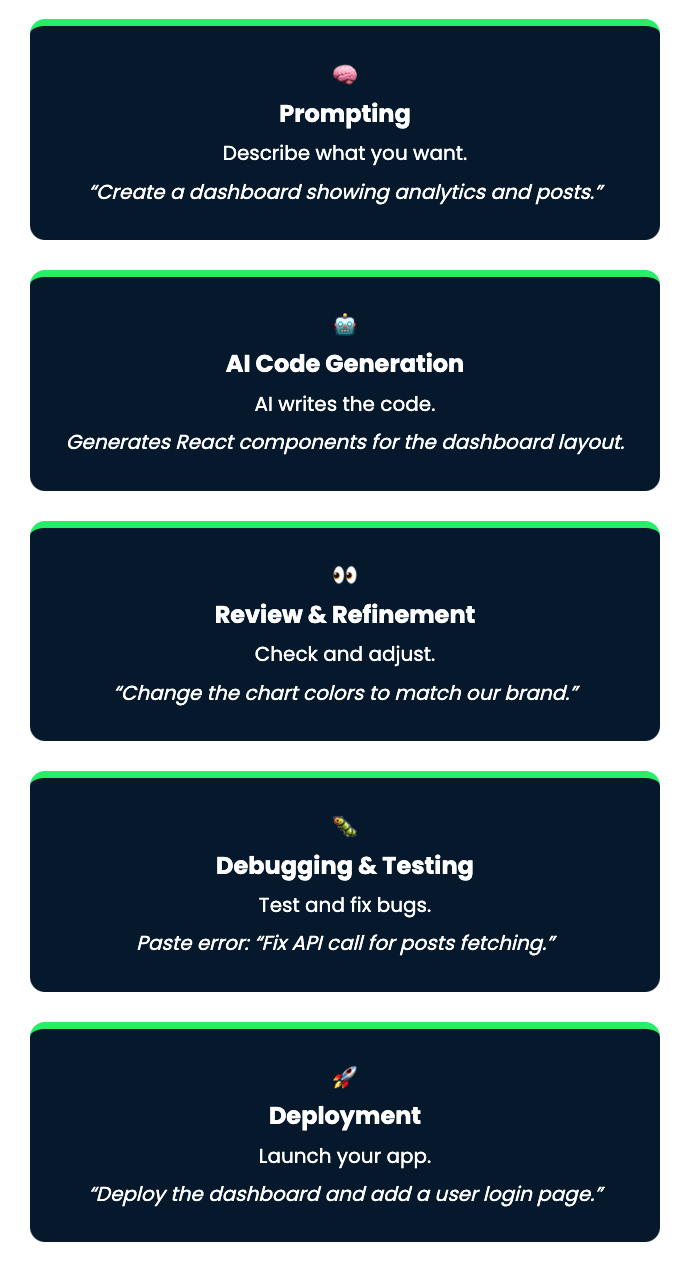
While vibe coding can make software development feel more conversational and creative, it also introduces risks around code quality, security, and long-term reliability. For now, it works best for quick prototypes, smaller apps, or as a starting point for experienced developers who know when to step in and take control.
Example of vibe coding workflow
Let’s say you’re planning an event and want a basic website where people can RSVP. You don’t know how to code, but you open an AI coding assistant and simply type:
“Build me a simple event page where guests can enter their name and email to RSVP. I want the page to say ‘Thank you for your RSVP!’ after they submit.”
The AI responds with:
“Here’s the HTML and JavaScript for your RSVP page. It includes a form with name and email fields, and a thank-you message that appears when someone submits the form.”
You try it out, but when you click the RSVP button, nothing happens. Instead, you see an error message:
“TypeError: Cannot read property ‘value’ of null.”
Not sure what this means, you copy the error message and paste it back into the AI chat:
“I’m getting this error when I click the RSVP button: ‘TypeError: Cannot read property ‘value’ of null.’ Can you fix it?”
The AI replies:
“It looks like the code was trying to grab the form inputs before they were fully loaded on the page. I’ve updated the script so it runs after the page finishes loading. Try this version instead.”
You paste the new code in, refresh the page, and now the RSVP form works just like you asked. This kind of back-and-forth captures the essence of vibe coding.
Vibe Coding Vs. Traditional Coding Methods
Vibe coding lowers the barrier to entry and can speed up the process of bringing ideas to life, especially for those without a traditional programming background.
However, because the AI handles much of the code behind the scenes, you may not fully understand how the system works under the hood. Debugging can become harder if you can’t easily follow the logic or spot deeper issues. The speed and convenience of vibe coding often come at the cost of flexibility and long-term maintainability, especially for complex or large-scale projects where fine control over every part of the system matters.
Here’s a closer look at how vibe coding compares to traditional coding:
|
Aspect |
Vibe Coding |
Traditional Coding |
|
Interaction |
Natural conversation with AI |
Manual writing in programming languages |
|
Required Expertise |
Little coding knowledge needed |
Strong programming background required |
|
Development Speed |
Fast creation and iteration |
Slower and more methodical |
|
Focus |
Ideas and what you want to achieve |
Low-level details, syntax, and structure |
|
Accessibility |
Open to many people, even non-coders |
Mostly for trained developers |
|
Control & Flexibility |
Limited to what the AI can handle |
Full control over every line |
|
Debugging |
AI helps fix errors, but can be less clear |
You fully understand and fix the problems |
Advantages of Vibe Coding
Let’s talk now about the advantages of vibe coding.

Accessibility
Vibe coding makes building software much easier for people without a technical background. When you describe what you need in plain language, coding becomes accessible to many people: entrepreneurs, designers, and experts from many fields.
Rapid prototyping
One of vibe coding's biggest strengths is the speed at which you can build early versions of apps, also called prototypes or MVPs (Minimum Viable Products). Instead of taking days or weeks, you can go from an idea to a working demo in just a few hours. This is especially helpful for startups and creators who want to test ideas quickly and get feedback before investing too much time or money.
Efficiency
Vibe coding helps by taking care of many boring, repetitive parts of programming, like setting up basic files, handling simple data tasks, and writing standard code patterns. With the AI handling these jobs, you can spend more time thinking about design, solving real problems, and improving the user experience.
Innovation
You can experiment more freely since you don’t have to worry so much about the technical details with vibe coding. It’s much easier to try out new ideas, test features, and build creative solutions without spending a lot of time or money. The instant feedback from AI keeps the creative momentum going.
Disadvantages of Vibe Coding
While vibe coding brings a lot of speed and creativity to software development, it also introduces new risks and challenges that are important to understand.
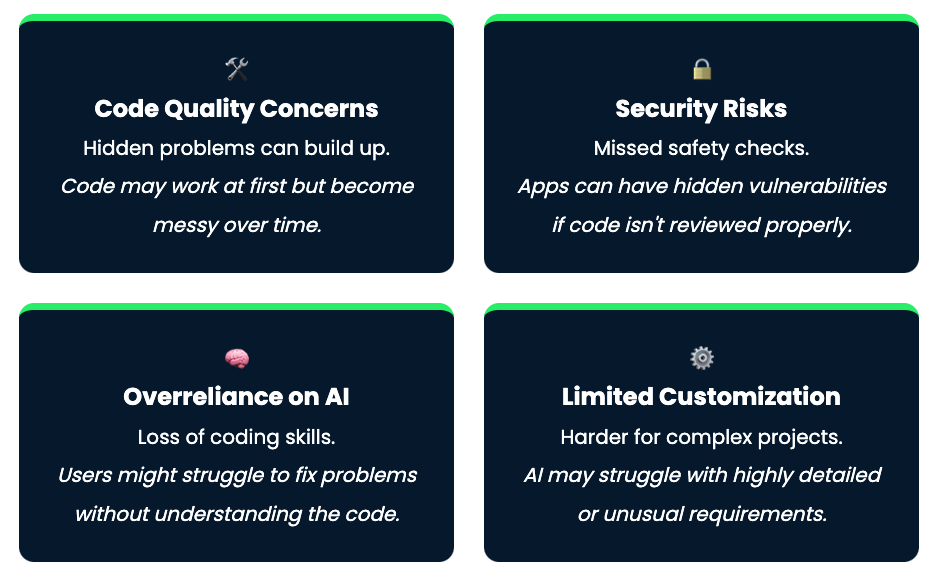
Code quality concerns
AI-generated code often works at first, but can have hidden problems. It might be inefficient, hard to understand, or tricky to update later on, especially if you don’t have a programming background.
This can cause apps to become messy over time and can lead to bigger issues when the project grows or changes are needed.
Security risks
Security is another major worry. AI tools sometimes miss important safety steps, like checking user inputs or handling errors properly. If users trust the AI’s work without double-checking, they risk releasing apps that are vulnerable to hacks, data leaks, or legal problems. Without careful code review, these risks can easily slip into live systems.
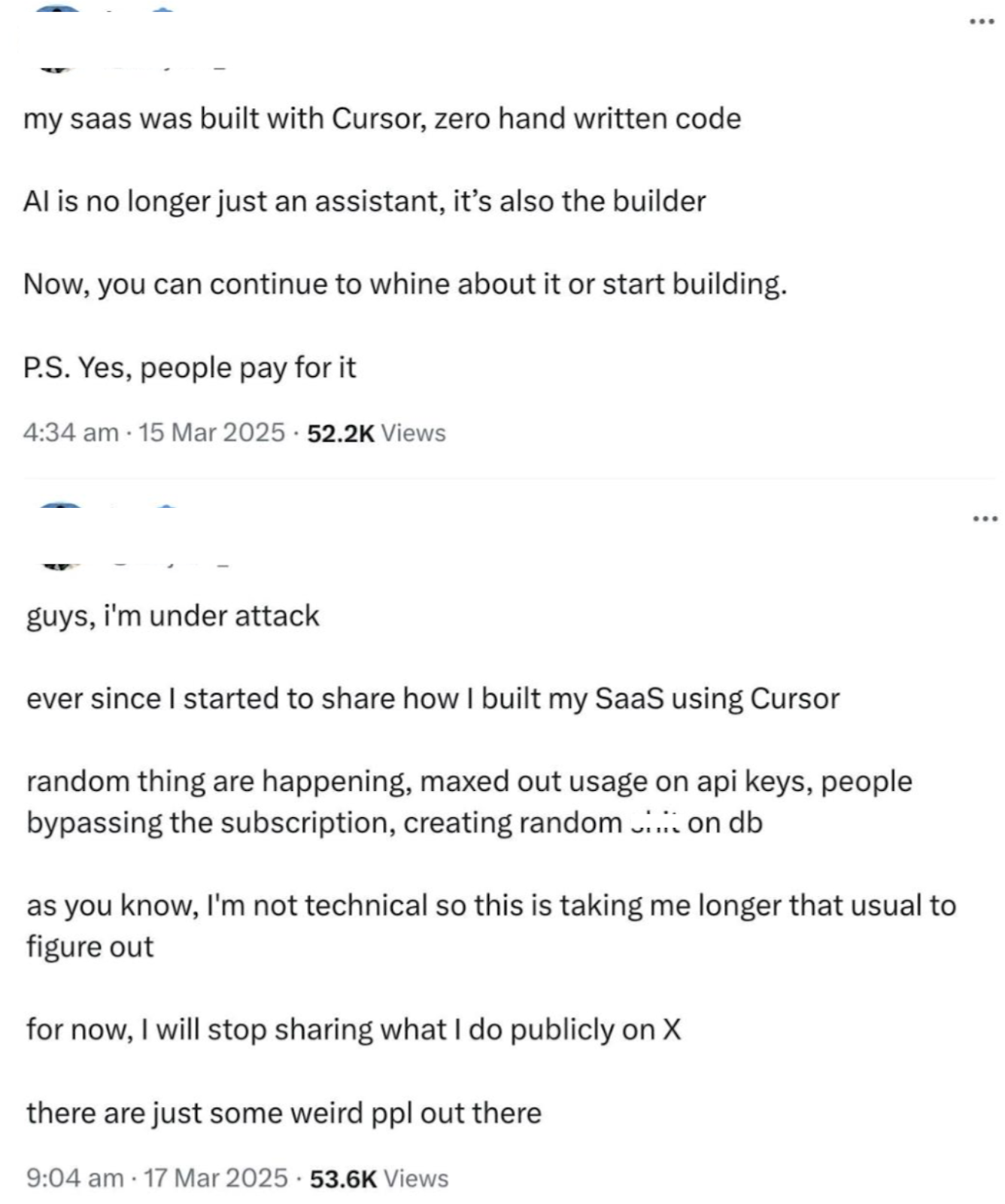
Example of security risks in vibe coding
To learn the best practices of vibe coding, check out this free webinar: Don't Just Vibe Code It; Understand It.
Overreliance on AI
Another challenge is that users may rely too much on the AI and not build strong coding skills themselves. If something breaks, they might struggle to fix it because they don’t fully understand how the code works. This can become a real problem, especially in professional environments where knowing the system inside and out is essential for long-term success.
Limited customization
While AI is great at handling common tasks, it often struggles with very specific or complex needs. If a project requires something unusual or highly detailed, the AI might produce basic or incomplete code, or miss key parts. As projects become larger and more complicated, users often have to step in manually to get things working properly.
For now, vibe coding is better suited for building smaller apps or quick prototypes than running large, critical systems.
Impact on Software Development
Vibe coding isn’t just changing how software is built — it’s also changing the roles of developers, the way startups grow, and how new skills are being taught across the industry.
Redefining developer roles
Instead of spending hours writing every line by hand, developers are now focusing more on creating good prompts, reviewing AI-generated code, and pulling together different AI outputs into working systems. Skills like prompt writing, system design, and code review are becoming just as important as traditional programming.
Some new specialties are emerging around AI-assisted development, like prompt engineering and AI ethics advising, though these are often part of broader engineering or policy roles rather than entirely separate job titles.
Startup dynamics
For startups, vibe coding is a big opportunity. Small teams can now build products at a speed that used to require much bigger engineering groups. Startups can move from idea to launch faster than ever, sometimes in just days or even hours. This makes it easier to test ideas, pivot quickly, and stay flexible. It also means founders and non-technical team members can get more involved in creating software without needing large, expensive teams.
Education and skill development
Vibe coding is also starting to influence how programming is taught. While understanding coding fundamentals remains important, there’s growing attention on how to work alongside AI tools—for example, learning how to write clear prompts, review AI-generated code for mistakes or security issues, and integrate that code into larger projects.
This shift could make software development feel more accessible to people who might not come from a traditional computer science background. But at the same time, it highlights a tension: the easier it becomes to generate code, the more important it is to know enough to spot when something isn’t working as it should.
Rather than replacing the need for technical skills, vibe coding adds a new layer of collaboration between humans and computers. Knowing how to navigate that collaboration well is quickly becoming part of the skill set.
Vibe Coding Tools
More and more tools are now making it easy to start building with vibe coding. Let’s have a look at some of them.
Cursor
Cursor is a smart code editor built on top of Visual Studio Code. It uses powerful AI models like GPT-4o and Claude 3.7 Sonnet to understand your codebase and help you write, improve, or fix code using plain language.
To learn Cursor, check out this tutorial with ten practical examples: Cursor AI: A Guide With 10 Practical Examples.
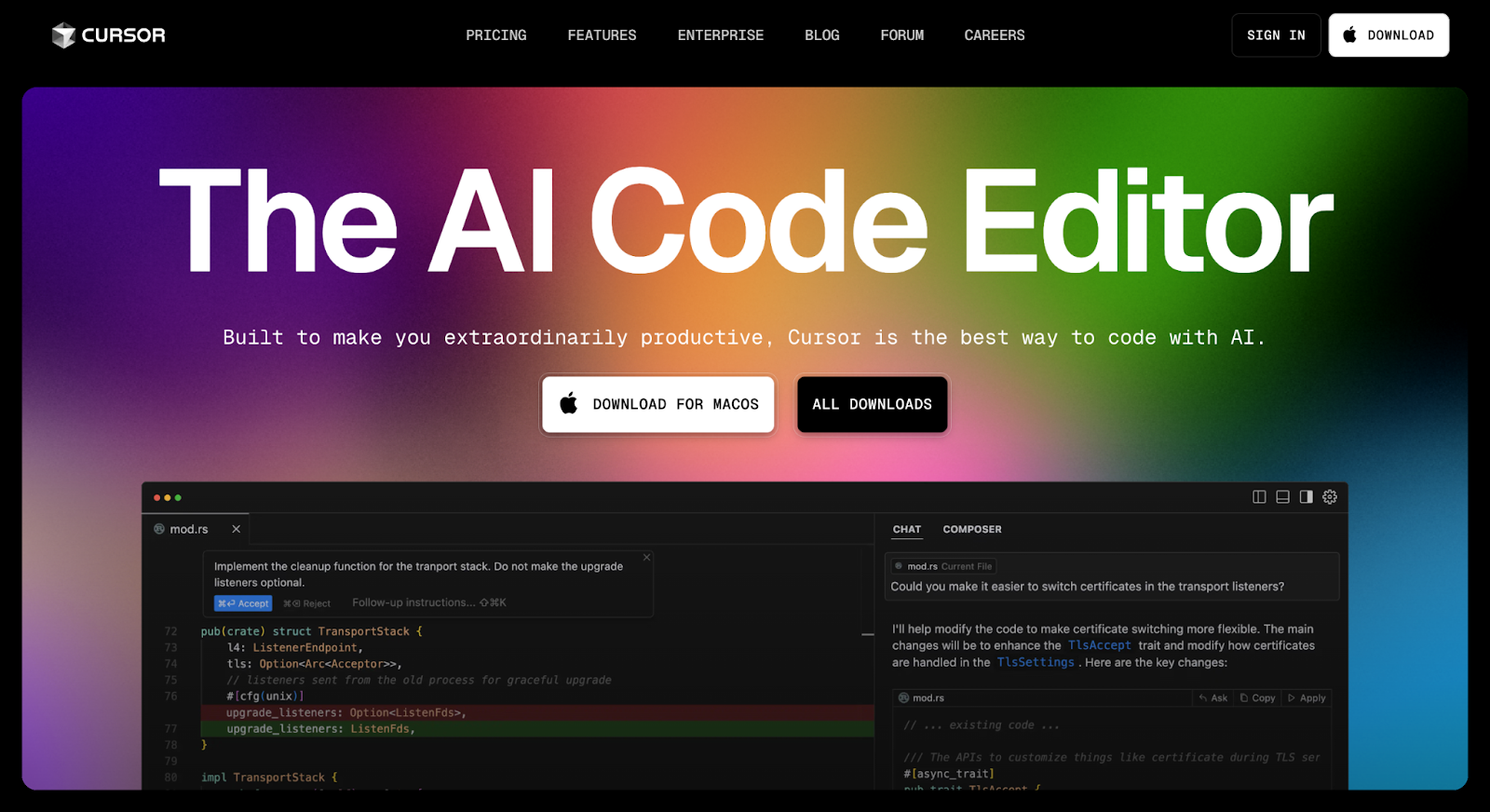
Replit
Replit is a cloud-based coding platform that supports over 50 programming languages. It comes with a built-in AI assistant that helps you write, debug, and clean up code while you work. You can describe what you need in normal language, and Replit’s AI will generate or fix the code for you. It also offers instant deployment, version control, and live collaboration, all accessible straight from your web browser—great for quick prototypes, group projects, or learning environments.
One of the best ways to learn this tool is through practical examples with Replit.
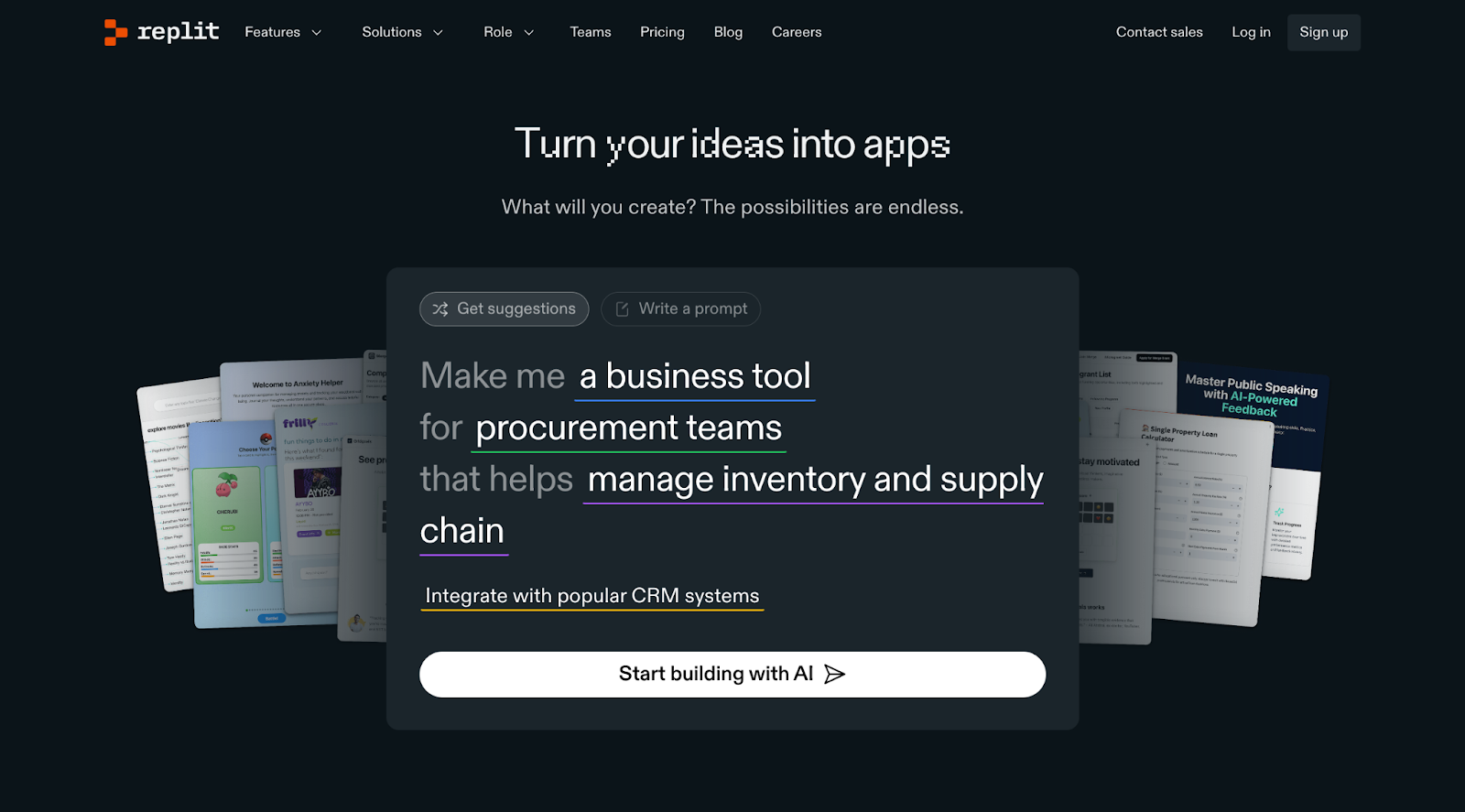
Lovable
Lovable is a no-code/low-code tool that lets you build apps just by describing what you want. It reads your prompts and creates the code and structure for web and mobile applications, even if you have no programming experience.
Learn more through a Lovable demo project.

Bolt
Bolt is designed for building quick app prototypes with help from AI. You can describe your app’s features or flow in plain English, and Bolt will generate the backend, frontend, and even the deployment setup for you. It’s a strong choice for startups and product teams that want to test ideas and move fast.
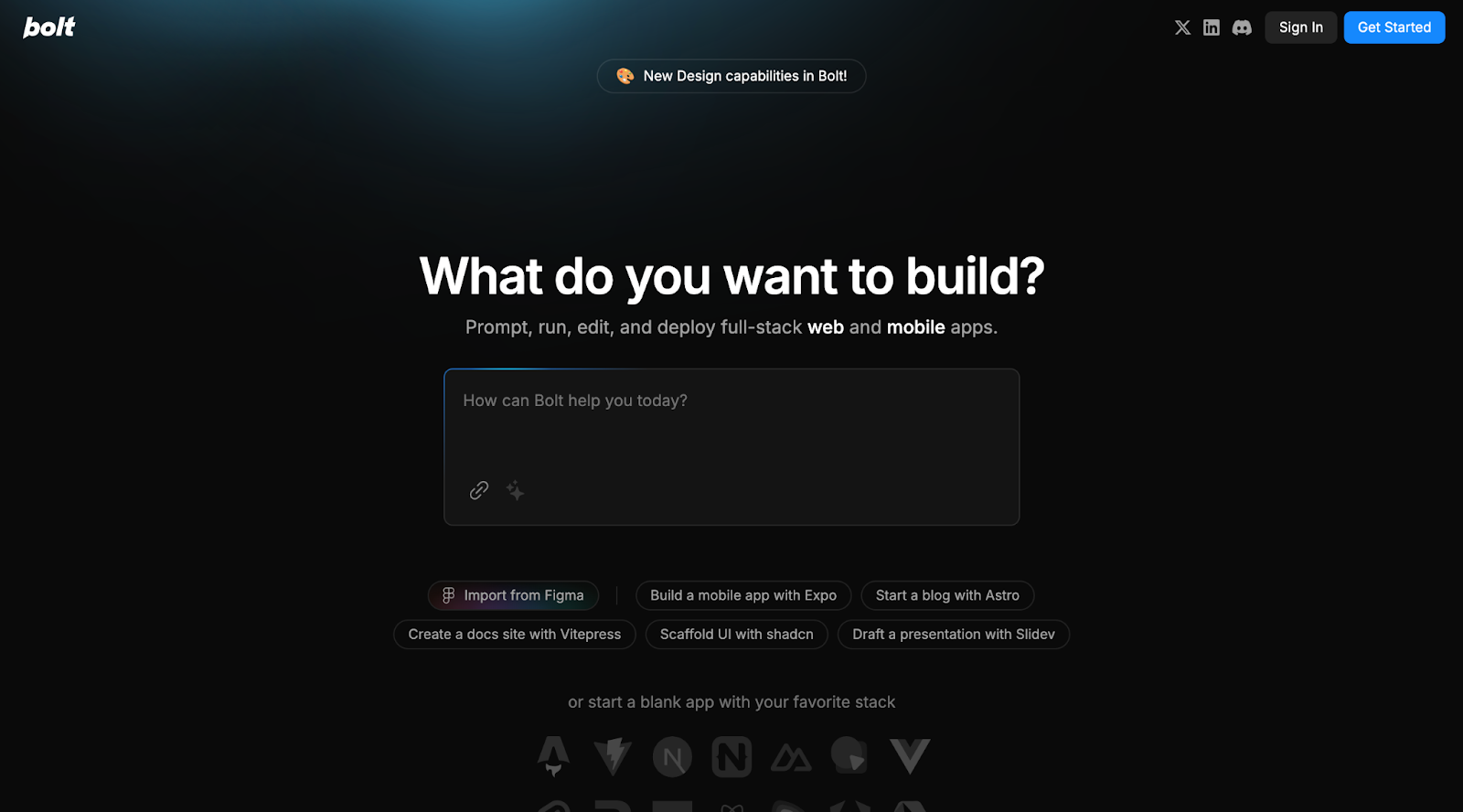
Windsurf
Windsurf is a full-stack development platform powered by AI. It offers tools like Supercomplete, which guesses your intent and generates code accordingly, and Cascade, which builds interactive AI workflows. With Windsurf, you can edit code, refactor it, and even turn screenshots into working code. It’s especially handy for developers working on bigger, more complex projects who want tight AI support across both frontend and backend.
Learn more in this tutorial about Windsurf.

Tool comparison
If you're just starting out or want something simple, Lovable is a great choice to quickly turn ideas into apps without needing to code. If you’re looking for a full coding environment with AI help but still want flexibility, Replit is easy to use and great for fast projects.
For more advanced users who want to stay inside a familiar code editor, Cursor offers a lot of power without changing how you usually work. Bolt is ideal if you need to build and test app ideas quickly with very little manual setup.
And if you’re working on bigger, more detailed projects, Windsurf offers deep AI support across both the frontend and backend, helping you manage complex builds with ease.
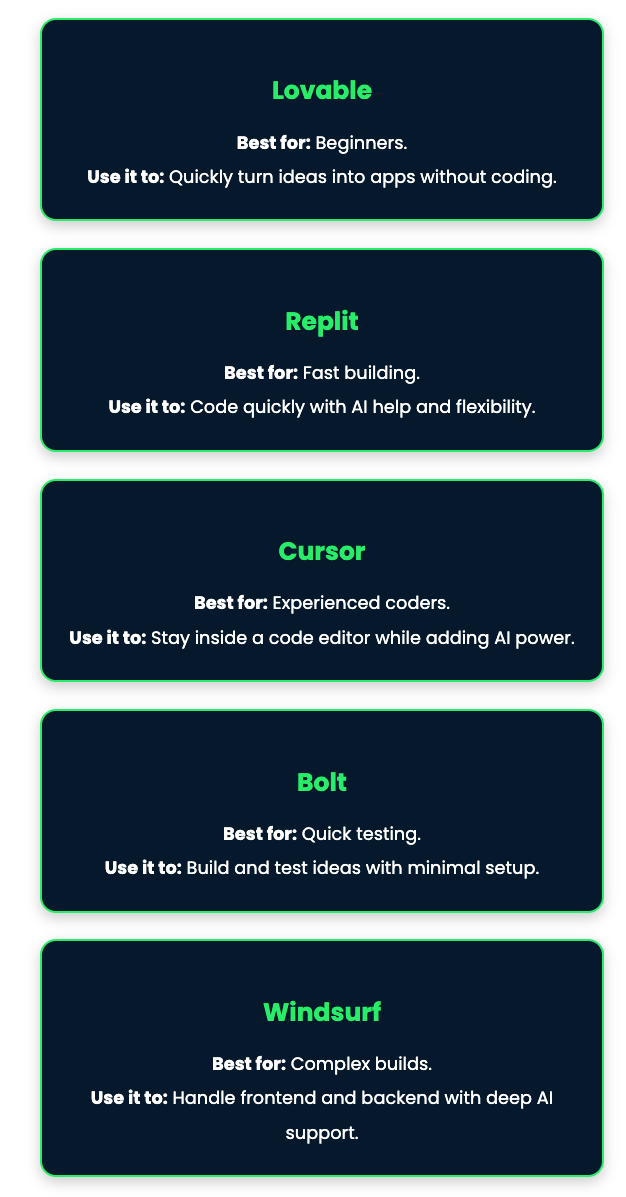
Conclusion
Vibe coding is starting to reshape how software gets built, making it easier to turn ideas into working products by describing what you want in plain language. It’s already helping some teams move faster during early prototyping and lowering the entry barrier for people who might not have a traditional programming background.
But this shift also comes with real trade-offs. Code quality, security, and long-term maintainability can suffer if the AI’s output is trusted without review. More complex projects still demand human judgment, clear system design, and a solid understanding of how the underlying code works. Rather than removing the need for technical skills, vibe coding changes where those skills come into play.
As tools like Cursor, Replit, Lovable, Bolt, and Windsurf continue to improve, vibe coding may become a bigger part of how teams and individuals approach software development. For now, though, its strengths lie in small projects, experimentation, and rapid iteration, with human oversight remaining key to keeping things reliable.
Ana Rojo Echeburúa is an AI and data specialist with a PhD in Applied Mathematics. She loves turning data into actionable insights and has extensive experience leading technical teams. Ana enjoys working closely with clients to solve their business problems and create innovative AI solutions. Known for her problem-solving skills and clear communication, she is passionate about AI, especially generative AI. Ana is dedicated to continuous learning and ethical AI development, as well as simplifying complex problems and explaining technology in accessible ways.

